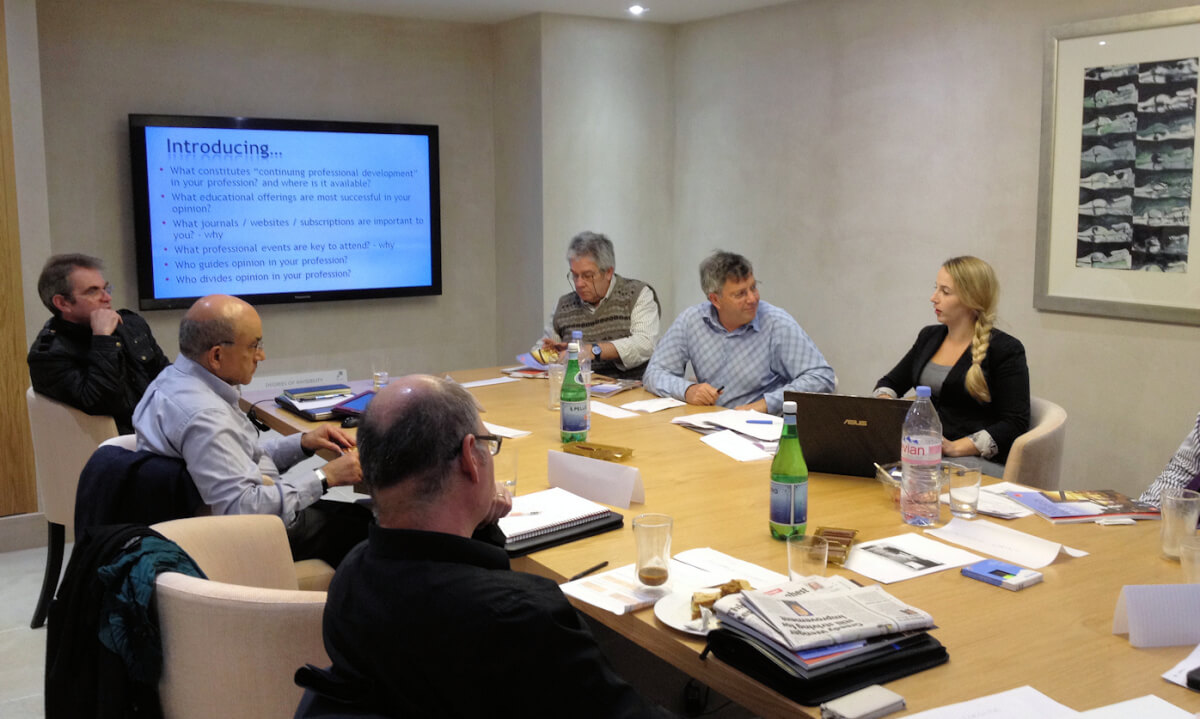Architects focus group for CEDIA
I had an interesting day yesterday as one of the moderators in an architects’ focus group on behalf of CEDIA (The Custom Electronic Design and Installation Assocation).
Why run this architects’ focus group?
The brief was to find out what architects thought of home technology, what experiences they had had, what’s important to them in specifying and delivering Home Technology solutions and ultimately what CEDIA means to them.
The session was well attended with seven architects giving up their time for the session at the Smart App-artment in Windmill St, courtesy of hosts Cornflake.

It’s easy for us as an industry to focus on what we mean by Home Technology. It’s multiroom audio and video isn’t it? It’s home cinema, lighting control, heating control, CCTV, networking and communications, remote access etc. Looking at it from an architect’s point of view it’s a slightly different matter. Technology runs throughout a home build. Insulation is technology, timber, glass, doors are all technology. Home electronics is maybe a better description of what CEDIA members are there to provide.
Technology is everywhere, Integration is where CEDIA members really add value
But as we and the architects we work with know, home electronics are also getting smarter and all-pervasive. So there’s no shortage of clever DIY “Smart” solutions. In the discussion iPads, Sonos and Philips Hue were all cited as examples of technology that our architects’ clients could and did call on. Where they saw the gap was integration and it was integration where they saw CEDIA and CEDIA members sitting. Even if you don’t know what integration entails and you don’t what’s available to integrate, you do know that there’s need to find a way of pulling different electrical technologies together. The common view was that having trusted specialists in this area was key and the preferred way to choose the specialists was through recommendation and direct experience.
So where can CEDIA help?
I don’t want to pre-empt the fuller analysis of the group but I’d summarise the group’s feedback into three headings: Training, Useful Information and Assurance. Everyone was aware of the CEDIA CPD course and most, if not all had attended it. There was agreement that more focused, more detailed CPDs would be a useful addition to the current overview. In terms of useful information, a number of attendees described a document that gave some detail around infrastructure requirements. The CEDIA Recommended Wiring Guidelines is such a good fit against this need that it really does emphasise how important it is for us to publicise it exists! Assurance was the final element. People had differing views on what it took to become a CEDIA member be everyone assumed that membership should provide a form of security in terms of quality assuarance and competence.
Building Information Modelling is a real and confusing development area
I’ll pick BIM out to close off simply because it’s such a hot topic and yet there is so much confusion around it at the moment. There’s no doubt that BIM is a significant development in architecture and construction and we as an industry have a role to play. However, where the direction and co-ordination is to come from is unclear. CEDIA sits at the intersection of the manufacturer, the installation companies and the design and architecture communities. It’s ideally placed to pick up the challenge of facilitating BIM in the residential space.
Thanks to everyone who attended this focus group – one of a series. We hope we can take the feedback and help it shape our work with architects in the future.
Useful Links
CEDIA – Custom Electronic Design & Installation Association
